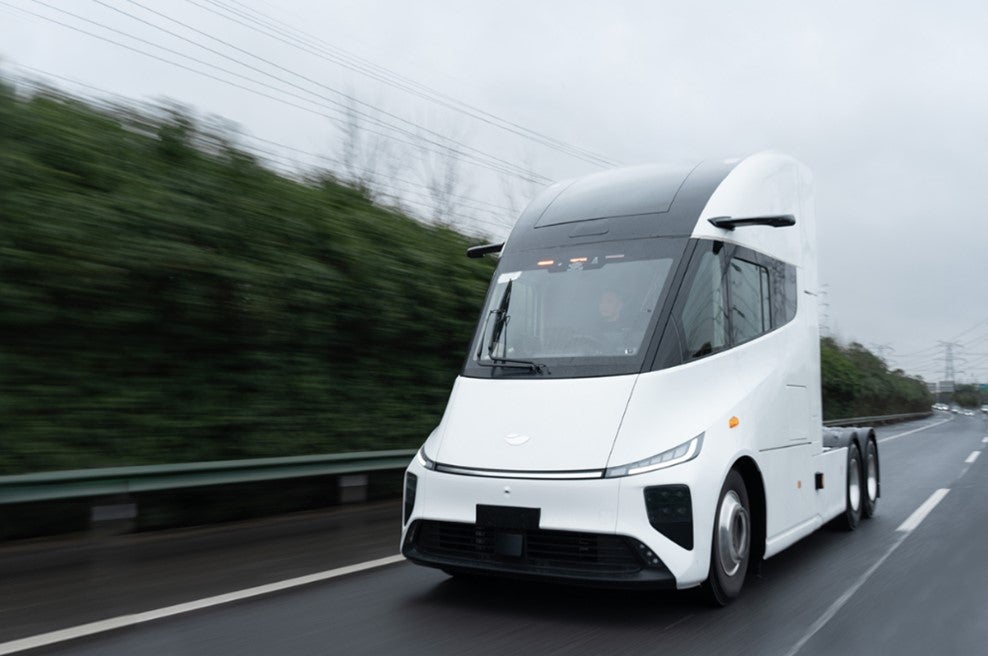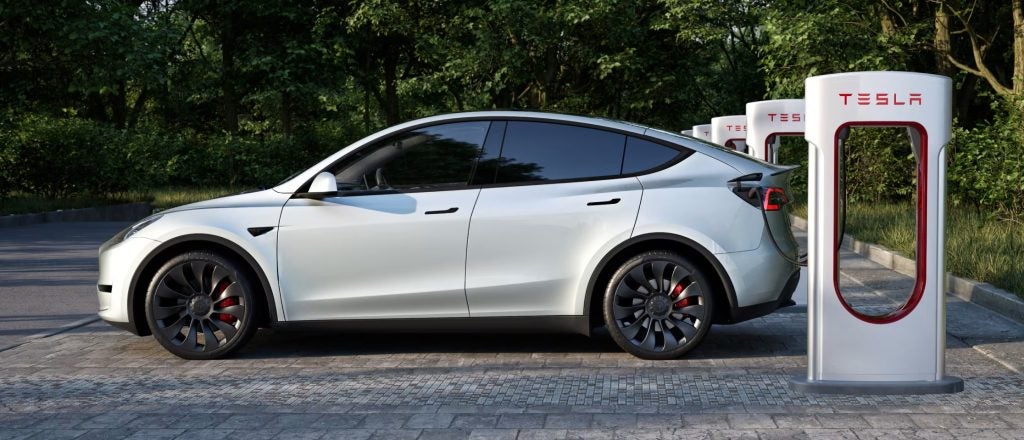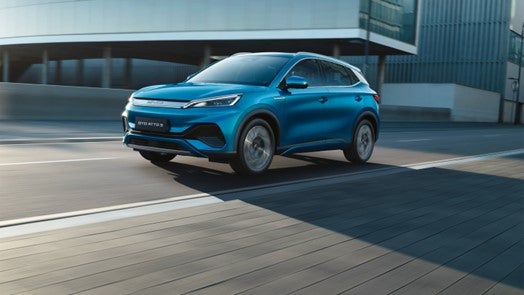
February was a record-breaking month for car sales in the Indian market, as was January. Both Hyundai and Tata continue to close in on long-time leader Maruti Suzuki, which now controls less than 43 per cent. And whilst that sounds whopping, it was 50+ per cent not too long ago.
Can Tata catch its Korean rival in 2024? Well, there was a big shock not too long ago when the Nexon beat all comers to end the month of December in first place. So not only did Tata leapfrog Hyundai but it also trumped the best-selling Maruti model.
How well do you really know your competitors?
Access the most comprehensive Company Profiles on the market, powered by GlobalData. Save hours of research. Gain competitive edge.

Thank you!
Your download email will arrive shortly
Not ready to buy yet? Download a free sample
We are confident about the unique quality of our Company Profiles. However, we want you to make the most beneficial decision for your business, so we offer a free sample that you can download by submitting the below form
By GlobalDataIn January, sales of another Tata, the Punch, doubled (year-on-year), the little SUV taking second position behind the Maruti Baleno. It happened again in February, the gap to the number one Maruti (Wagon R) being fewer than 1,000 cars (19,412 versus 18,438 for the Punch).
The Indian OEM is clearly on a roll and has no intention of allowing fourth place Mahindra to become any closer either. Lots of new and refreshed models are coming, and this report examines some of them, along with likely future JLR vehicles.
Tata
Planned years ago, many of the new Tata vehicles landing in 2024 will by happy coincidence arrive at the perfect time to build on recent sales progress. This company, which once kept its vehicles in production way longer than their Maruti equivalents, is becoming adept at novelty. And look at the results: the Nexon and Nexon EV were facelifted in September 2023 and buyers responded almost immediately.
The electric Nexon is, by the way, the first model to be manufactured at what had been a Ford factory. Sanand in Gujarat was rapidly gutted and refitted, series production commencing only weeks ago, just one year after Tata took took control of the site.
Similarly, the Harrier was also updated in Q4 of 2023, as was the Safari, followed at year-end by the Punch EV. This model is an especially clever piece of engineering, its ALFA platform being adapted with elements of Tata’s Gen 2 electric vehicles architecture. The result is branded acti.ev (pronounced active and a contraction of advanced, connected, tech-intelligent electric vehicle).
Coming next will be a mid-cycle facelift for the XUV300, with an electric variant to be added at the same time. It seems to be the year for electric Tatas, as yet another one, the Curvv EV, will also debut. Production is to be at the Ranjangaon factory in Maharashtra with diesel and petrol variants to follow later in 2024.
There will be fresh powertrains news for the Harrier and Safari too, potentially this year though possibly this may instead happen in H1, 2025. First comes a 1.5-litre petrol engine for each, then an EV. After this we should see facelifts for the Punch and Punch EV (later in 2025), an Altroz EV and the Sierra. The last of these was revealed as a concept at the New Delhi Auto Expo in January 2023.
Where there is a new IC-powered model, inevitably Tata Motors will then add an electric variant. So it follows that a Sierra EV should reach dealers during the second half of 2025, followed by the first ‘Avinya series’ model. Due for launch in either late 2025 or early 2026, this, the first vehicle for what could turn out to be a new sub-brand, will use JLR’s Electrified Modular Architecture.
Jaguar
After a final run of 150 cars was announced back in October 2023, production of what had been one of the best looking cars of the 2010s and 2020s came to an end. With no replacement. What has become of the F-Type says much about what has happened to Jaguar. And it’s worse than that. Way worse.
Nobody knows why the I-Pace has not been further developed so that it remains a state of the art luxury EV. An excellent car from the commencement of sales in late 2016, it has now been reduced to yet another Jaguar which no apparent future or scheduled replacement.
What is especially worrying is that JLR management seems to believe that, as Stellantis continues to with Alfa Romeo, throwing a new model or two onto the market will work. We need only look at how poorly the Italian marque continues to perform (only just outselling the one-market, one-old-model Lancia) to see that years and years of uncaring stewardship has consequences.
There will be much blowing of trumpets and declarations along the lines of the cat is back as soon as April or May. Already we are seeing the PR machine drip-feeding some initial hype in the form of the image above, along with the curious use of the word ‘exuberance’. All well and good but will the market suddenly embrace a six-figure cost electric car?
Jaguars need to be gorgeous, to look as though they are fast even when at rest. And crucially, to be priced sensibly. The latter was why neither the F-Type nor the I-Pace ever lived up to their volume potential.
If an SUV or car is properly proportioned, if it is beautiful, if the interior is genuinely high-end and offers true functionality over distracting gimmicks then there is no need for buzz-words. Or for the looks to be explained or classified.
So then, will the debut of the so-called electric four-door GT in Q2 be enough to relaunch this limping, underfed moggie of a brand?
JLR seems to believe that it can place a GBP100,000 EV on the market and wait for the orders to flow in. And that one hundred thousand pounds or its equivalent in export countries is said to be the base price.
Perhaps if the car hit the market as urgently as it is needed, things might look a little more optimistic but no, we must wait until 2025 for the first deliveries.
Supposedly, the Audi e-tron GT rival (one presumes) is to be the first of three new Jaguars, none of which replaces an existing model. Each will be manufactured in England’s West Midlands (Solihull) with the existing Castle Bromwich plant to be reinvented as a stamping centre. The final Jaguar cars – XE and XF – will be produced by mid-2024, leaving only the E-Pace, F-Pace and I-Pace.
IF the relaunch car enjoys a seamless ramp-up, that might restore some faith in Jaguar itself. The high pricing will take a long time to sink in though. But the second vehicle is set to arrive during the following year, this being a Range Rover-sized electric SUV.
Supposedly the third model will be a large limousine in the style of the long-ago XJ L, so we are talking perhaps 5.3+ metres long when it lands in 2027. The E-, F- and I- will likely have been phased out by then.
All three future Jaguars will be based upon a special architecture called JEA. And why exactly has the glaringly obvious idea of doing a Macan EV rival apparently been rejected?
If JLR can build and sell a combined up to 50,000 of these models each year commencing in 2027 or 2028 things might at least look brighter than they do today. Yes, volume has picked up dramatically of late but that is compared to an equally substantial plunge more than a year ago. ACEA data for the most recently published month (January) show fewer than 2,000 Jaguars sold Europe-wide, with the UK taking the majority of this volume. Even DS deliveries were near-double (1,855 versus 3,715). As with Alfa Romeo, there is an enormous amount of goodwill for the big cat brand – can it claw its way to an eventual self-funding future?
Land Rover
It looks as though JLR will allow Jaguar and its forthcoming luxury car prototype to be the main big debut of 2024. Then, come early next year and deliveries of the as-yet unseen electric Range Rover will commence (February). A Range Rover Sport equivalent should begin rolling off the same production line in Solihull in the fourth quarter. The electric RRS will almost certainly be revealed this year in prototype form.
Mystery surrounds the future of both the existing and replacement for another high-profit Land Rover, that being the Discovery Sport. JLR needs to be careful not to keep producing this elderly SUV until sales have collapsed. It may still look good but there is no disguising the fact that the model itself is now in its tenth year of production. The platform, which dates to the Ford ownership era, is older still.
JLR is likely trying to ascertain whether or not to push through an electric successor for the family-sized SUV, as well as its far younger Range Rover Evoque twin-under-the skin. As the latter is only five years old, in theory the third generation should be landing in perhaps 2027 or 2028 but JLR cannot wait until then to replace the Disco Sport. Or can it?
The previous Discovery was built for 13 years and was fairly popular even in the final period of that long life cycle. Therefore, perhaps the next Discovery Sport really is still some years away. It should be electric-only, arriving around one year ahead of the future e-Evoque.
Another new model rumoured to be on the way in either 2026 or 2027 is the long-delayed Defender Sport. This 4.6 m long SUV should be manufactured at the Halewood plant on Merseyside. The architecture for the electric off-roader would be EMA. JLR is also planning the fourth generation Discovery for 2027. It seems obvious that this model will return to the square-looks format which worked so well for the first and second generations. The present series, which dates to 2017, has been a major disappointment due, some say, to how it looks compared to the acclaimed appearance of its predecessor.
The L663 series Defender, meanwhile, seems highly likely to be exceptionally long-lived. Launched in 2020, the first of what could be two facelifts probably will not take place until 2025 or 2026, meaning that build should continue well into the 2030s. We should however expect certain powertrain updates as emissions norms are tightened in major markets.
Finally, L460, the generation five Range Rover. Launched in 2022, it will surely last for a decade. This means that an eventual electric-only Range Rover generation six will not arrive until perhaps 2032. The existing model should be facelifted in 2027.








